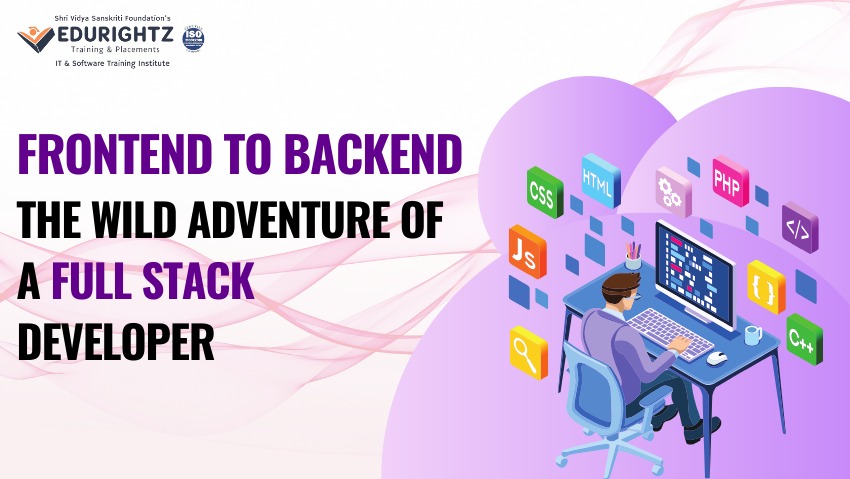Frontend to Backend: The Wild Adventure of a Full Stack Developer
The role of a full stack developer is nothing short of a tech adventure. From creating visually stunning interfaces to building robust back-end systems that handle enormous amounts of data, a full stack developer masters both sides of the development spectrum, transforming ideas into functioning applications. But what exactly does a full stack developer do? Let’s dive into the daily journey of these versatile tech navigators and explore the challenges they face on the wild frontier of coding. The Frontend Frontier The frontend is where users interact with an application. It’s the face of the product, the part that needs to be intuitive, responsive, and, above all, engaging. Frontend developers use HTML, CSS, and JavaScript to design the interface and ensure seamless user experiences across devices. For a full stack developer, the challenge is not just about making things look good; it’s also about optimizing performance, ensuring accessibility, and adhering to best practices in UX/UI design. With trends constantly evolving and new frameworks like React, Angular, and Vue.js entering the scene, staying updated can feel like an adventure of its own. Navigating the Backend Wilderness If the frontend is the glamorous city skyline, the backend is the engine room that powers everything behind the scenes. It involves databases, servers, APIs, and more, all crucial for the application to function smoothly. A full stack developer handles the logic, architecture, and infrastructure that manage data and ensure security. Back-end development is where the wild things happen: concurrency issues, database optimizations, security threats, and scalable architectures. Working with tools like Node.js, Python, Ruby, or PHP, and databases such as MySQL, PostgreSQL, or MongoDB, a full stack developer needs to keep everything efficient and secure. Mastering the Full Stack Balance The journey of a full stack developer is a balancing act between the aesthetic demands of the frontend and the functional challenges of the backend. This dual expertise provides a 360-degree view of the project, allowing developers to have more control over the final product. Yet, this versatility comes with challenges: Constant Learning: Technology evolves fast. From new JavaScript frameworks to backend server environments, the learning never ends. Time Management: Balancing frontend and backend tasks requires an effective workflow. Sometimes, a bug in the backend can halt frontend progress. Collaborative Skills: Even though a full stack developer can manage both ends, they often collaborate with dedicated front-end designers or back-end engineers, making communication key. The Perks of Being Full Stack Despite the challenges, being a full stack developer is rewarding. The ability to build an entire application from scratch gives immense creative freedom. Full stack developers are also highly sought after in the tech industry due to their versatile skill set. Moreover, having an understanding of both frontend and backend enables more informed decision-making, leading to better overall product development. Final Thoughts Being a full stack developer is more than just a job; it’s an ongoing adventure. The ability to see both the front and back of the tech world empowers developers to create solutions that are not only beautiful but also powerful. As technology continues to evolve, the journey will only get wilder and more exciting. So, whether you’re standing at the edge of a new project or scaling the peaks of the latest technology trends, embrace the adventure. The wild ride of full stack development has a lot to offer for those willing to take it.
Frontend to Backend: The Wild Adventure of a Full Stack Developer Read More »




